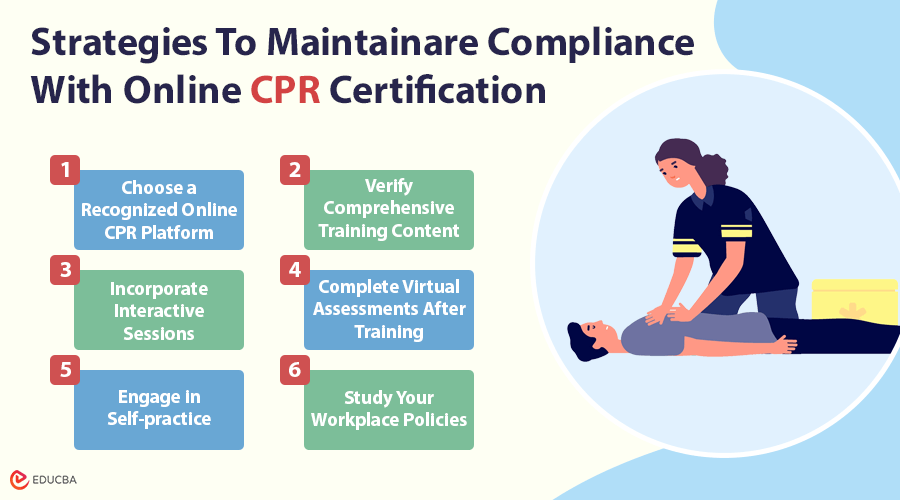Compliance with Online CPR: Overview
Cardiopulmonary resuscitation (CPR) certification is essential for healthcare providers (HCPs), and recent advancements in augmented reality (AR) technology have significantly improved online CPR training, making it one of the most effective learning methods. A study shows that 98% of HCPs found virtual training beneficial, with 82% considering it realistic. However, navigating compliance with online CPR training programs can be challenging for healthcare providers, especially as they strive to meet legal certification requirements in a rapidly evolving landscape.
Online CPR certification is becoming more popular among healthcare providers because it is convenient and flexible, especially for busy professionals. However, meeting all legal requirements through online courses can be tricky. This guide explores how healthcare providers can effectively manage the complexities of compliance with online CPR training programs while staying up-to-date with certification requirements.
Understanding CPR Regulatory Compliance
International organizations like the International Liaison Committee on Resuscitation (ILCOR) and state health departments set regulatory standards that training programs must follow. Research shows that following these quality guidelines improves survival rates in emergencies.
Key areas of compliance include:
- Certification Standards: Meeting these standards ensures high-quality training, helping participants acquire essential CPR skills.
- Skill Renewal: CPR certification typically expires after two years, so regular renewal is essential to stay updated on the latest techniques and advancements.
- Record-Keeping: Accurate documentation of certifications helps healthcare providers maintain compliance with regulations, which is crucial for audits and inspections.
Strategies To Maintain Compliance With Online CPR Certification
Maintaining compliance with online CPR certification is crucial for healthcare providers to ensure they meet current standards and regulations. Here are some effective strategies to stay compliant:
#1. Choose a Recognized Online CPR Platform
The first step is selecting the right online platform. The platform must be recognized by the American Heart Association (AHA) or another designated body. This ensures credibility and the quality of training. Such platforms and their digital certificates are authentic and accepted by healthcare employers.
#2. Verify Comprehensive Training Content
A credible online CPR healthcare provider platform must comprehensively cover the following skills:
- Adult, child, and infant CPR
- Use of an Automated External Defibrillator (AED)
- Choking relief techniques
- Team dynamics in emergencies
- Specific requirements for healthcare settings
CPR for Healthcare Providers (HCP) is more advanced than standard CPR, so reviewing the course modules before enrolling is important.
#3. Incorporate Interactive Sessions
An effective online CPR training module for healthcare providers should incorporate interactive elements. In addition to online classes, trainees should look for virtual and simulated training environments. This helps them gain hands-on experience in environments based on realistic situations. Other interactive features like interactive assessments and live classes help with long-term skill retention.
#4. Complete Virtual Assessments After Training
After completing the online CPR training, it is essential to complete the virtual assessment. Many online training platforms provide virtual skills assessments using video conferencing technology. Schedule these tests immediately after training to ensure the information is fresh in your mind.
#5. Engage in Self-practice
While an online CPR healthcare provider offers flexibility, you must gain practical knowledge by:
- Participating in mock drills at the workplace
- Using CPR manikins for self-training
- Attending optional in-person refresher courses
#6. Study Your Workplace Policies
Different industries within the healthcare domain require different specializations and compliances. Employees must actively familiarize themselves with their employer’s policies to ensure the online training provider meets their workplace standards. Ensuring this will help them get a CPR training certificate that is useful for their work needs.
Benefits of Online CPR Health Care Provider Course
While traditional classroom training is valuable, online CPR courses offer several advantages. Online CPR healthcare provider training uses customized modules that meet various industry compliance standards. Here are some benefits of online CPR courses:
- Accessibility: This training method removes geographical barriers, as it is accessible from anywhere.
- Self-paced: Trainees can access modules and learn at their own pace, rewatching sections as needed.
- Flexibility: Working professionals can manage their training with their busy lifestyles. It helps them learn without interfering with their schedules and personal responsibilities.
- Updated Information: Online CPR training platforms can revise and update their modules, including the latest regulatory guidelines and research studies.
- Digital Certificates: One can easily log in and print their digital certifications. They are easy to store, maintain, and share for documentation.
- Cost-effective: Online training helps cut the cost of travel and missing work responsibilities.
Final Thoughts
Ensuring compliance with online CPR healthcare provider training is necessary for maintaining professional standards in the healthcare industry. Following industry regulations and guidelines is essential for delivering patients the highest quality of care. By selecting accredited institutes and regularly renewing certifications, you can guarantee the reliability of your online training. Additionally, CPR trainees must embrace lifelong learning to stay skilled and effective in their roles.
Recommended Articles
We hope this detailed guide on compliance with online CPR helps you stay informed about essential requirements for healthcare providers. Check out these recommended articles for more insights and strategies to ensure you are up-to-date with CPR standards.




